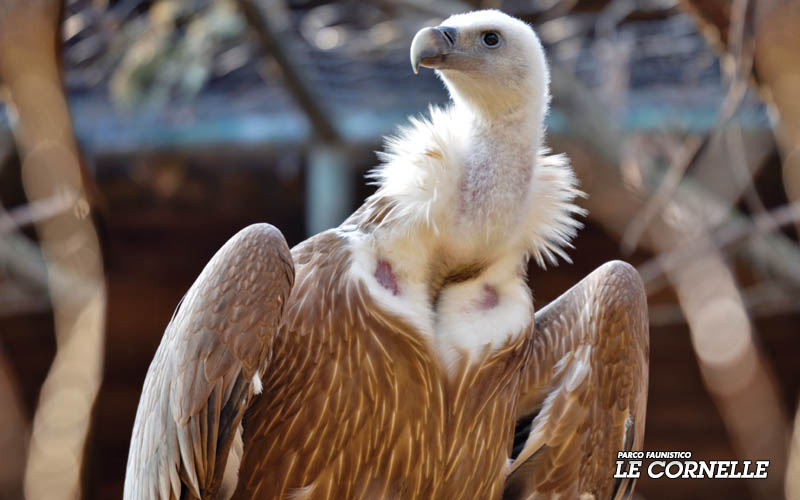-
Common name:
GRIFFON VULTUREScientific name:
Gyps fulvusClass:
AvesOrder:
AccipitriformesFamily:
AccipitridaeOrigin:
Southern Europe – South-west AsiaDiet:
carcasses of wild or domestic animalsHabitat:
open areas and rocky wallsReproduction:
Eggs: 1 – Incubation: 52 days -
The griffon vulture is a diurnal bird of prey, one of the largest and most majestic European fliers. It lives in Southern Europe and Southwestern Asia, especially in mountain areas; in Italy lives only in Sardinia. A few years ago it has been reintroduced in some areas considered suitable: Friuli and Abruzzo. A gregarious species with an accentuated social behavior, it lives in numerous colonies that need vast open surfaces for the search of food and not easily accessible rocky walls where to nest. The food peculiarities give the griffon vulture the ecological role of “sweeper” able to quickly eliminate carrion and reduce the possibility of spreading infectious diseases. It is a large vulture. There is no obvious sexual dimorphism. The wings are long and wide with a span between 240 and 280 cm; the tail is short and square. The coloring is tawny-brown tending to beige in adults and dark brown in immature specimens with bare heads and necks, covered with a short woolly quilt decorated at the base with a feather collar.
The characteristic bald head allows him to feed, digging into animal remains without getting excessively dirty. without getting excessively dirty. The beak is powerful and hooked, light in color in the adult and blackish in the young; the legs are robust, but not appropriate for catching live prey. Thanks to its excellent sight, it can spot possible food sources. It reaches sexual maturity after the 4th-5th year of age. He builds the nest with hides, hairs and branches, on rocky ravines, preferring caves and niches, but also on large trees, often close to other nests. The female lays only one egg, between January and March, which is hatched for about 52 days. The young griffon vulture flies from the nest 100-115 days after hatching.
Among the causes of the decrease in the species, is to be mentioned the evolution of zootechnics and veterinary rules and the direct persecutions by man, including the use of poisoned morsels. Average lifespan: 25-30 years.

Lista Rossa dell’IUCN (International Union for Conservation of Nature) fornisce informazioni sullo stato di conservazione di animali e piante. ( www.iucnredlist.org )















